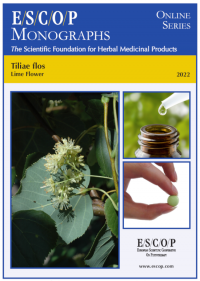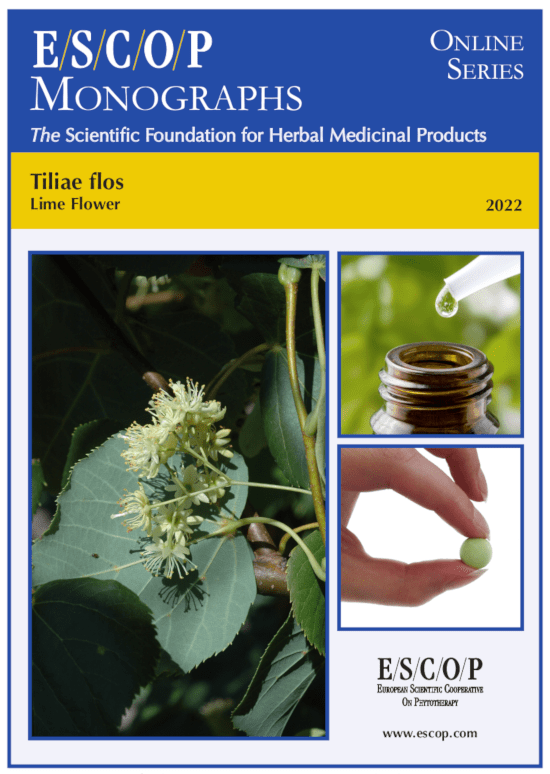
ESCOP monographs The Scientific Foundation for Herbal Medicinal Products. Online series. Tiliae flos (Lime flower). Exeter: ESCOP; 2022.

Tiliae flos
Lime flower
Tilia cordata Miller, Tilia platyphyllos Scop., Tilia × vulgaris Hayne (Tilia x europaea L.)
Published 2022
Format: PDF
>> Online viewing (for only Euro 30 per year, you can view online all the monographs; free for members of SEFIT)
Summary
The herbal monograph selects and summarizes scientific studies and textbooks regarding efficacy, dosage and safety to support the therapeutic uses of lime flower.
This herbal drug, by definition, consists of Tilia cordata Miller, Tilia platyphyllos Scop., Tilia × vulgaris Hayne, or a mixture of these. Tilia x europaea L. is a synonym of Tilia x vulgaris Hayne.
Studies with its main characteristic constituents flavonoids, proanthocyanidins, phenolic acids such as chlorogenic acid, caffeic acid and p-coumaric acid, mucilage polysaccharides, the essential oil, alkaloids and coumarins are included.
The therapeutic indications are feverish colds, cold-related cough, upper respiratory catarrh and restlessness.
Administration of lime flower addresses posology; its duration of use and undesirable effects, such as allergic reactions.
In vitro experiments with lime flower or its extracts, demonstrated antioxidant and radical scavenging activities, as well as inhibition of lipase, α-glucosidase, α-amylase, acetylcholinesterase and reduction of tyrosinase and elastase activity. Extracts also demonstrated antimicrobial activity, stimulatory effects on the proliferation of lymphocytes, as well as antiproliferative effects on a tumour lymphocyte cell line. In vivo experiments with lime flower or its extracts, demonstrated sedative effects in mice, a hepatoprotective effect in rats, as well as anthelmintic activity in a helminth parasite of pigs.
Pharmacokinetics: After inhalation of the essential oil of lime flower, benzyl alcohol and traces of benzaldehyde were detected in blood samples of mice.
Preclinical safety data were assessed in repeated dose toxicity studies.
The selection of literature cited in the monograph is aimed at bringing together relevant information about the possible physiological roles of lime flower and its major constituents.
Keywords
- Tiliae flos
- Lime flower
- Tilia cordata Miller
- Tilia platyphyllos Scop.
- Tilia × vulgaris Hayne
- Tilia x europaea L.
- Respiratory disorders
- Feverish colds
- Cold-related cough
- Upper respiratory catarrh
- Restlessness
